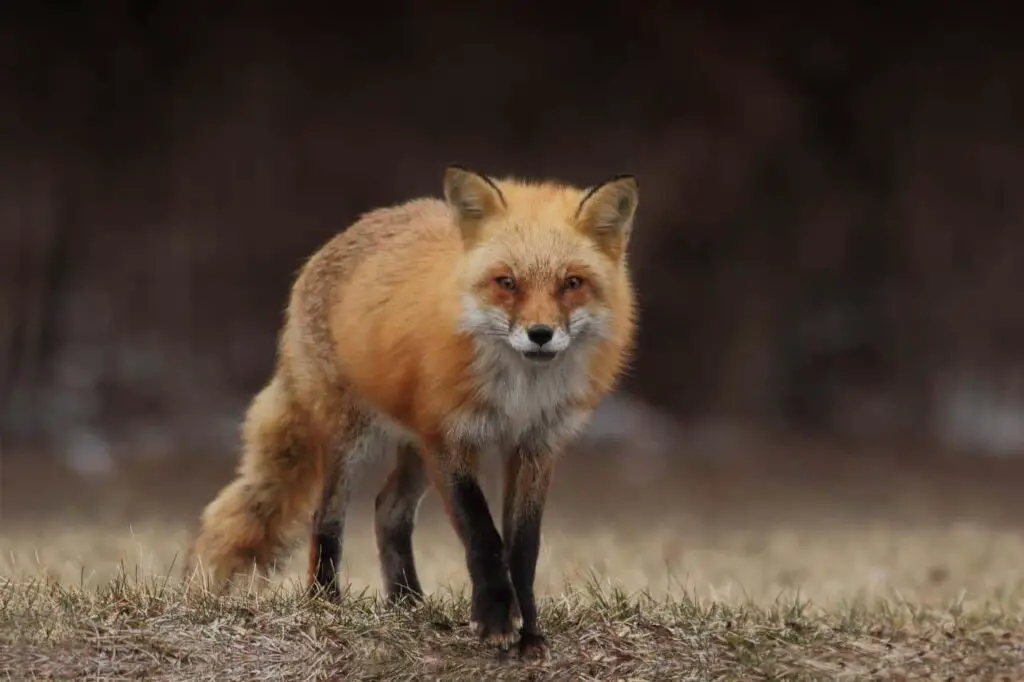
I read somewhere that eagles are admired worldwide for their symbol of freedom and power and that the fox is just a timid animal! But how would we compare fox vs. eagle?
Foxes are mammals and nurture their young in dens. They are omnivores feeding off vegetation and meat and are nocturnal animals who hunt at night. Eagles are birds of prey and raise their chicks in nests. They are carnivores living off fish and meat and are diurnal who hunt in the day.
The fox and the eagle are two very different species but do we know more interesting facts about how they raise their young, where they live, how they hunt, and their physical features!
Table of Contents
- What are the Physical Difference Between the Fox and the Eagle?
- Other Features and Facts of the Fox and the Eagle
- Where Do the Fox and the Eagle Live?
- Family Life of the Fox and the Eagle
- What Do Foxes and Eagles Eat and How Do they Hunt?
- Who are their Predators?
- Conclusion
What are the Physical Difference Between the Fox and the Eagle?
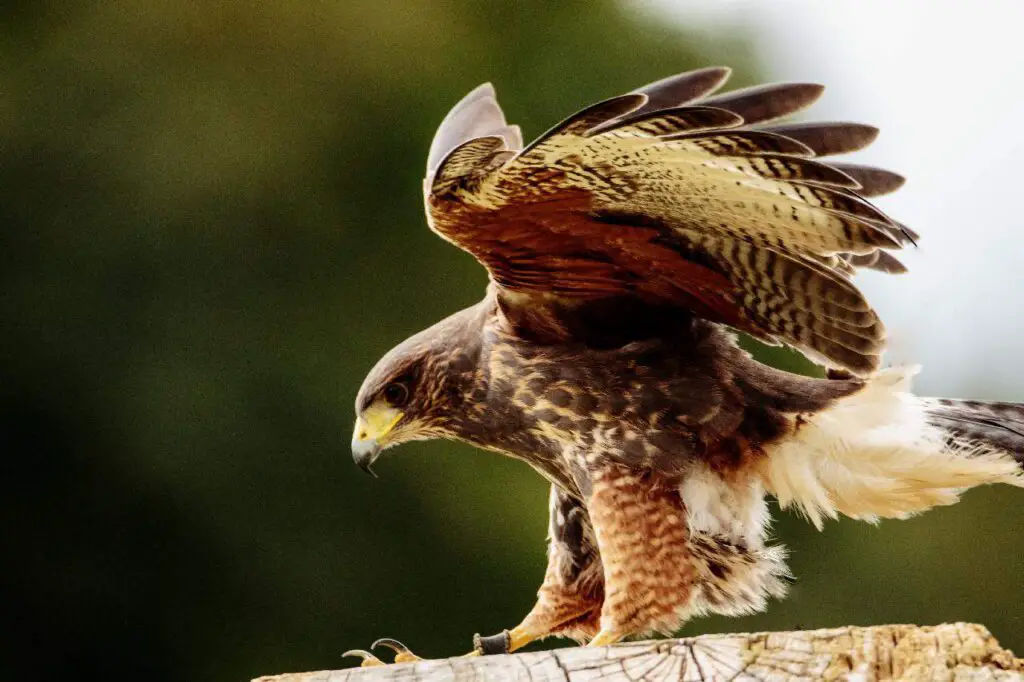
The Fox
Foxes are mammals that are small to medium in stature. The ears are upright and triangular, and the snout is slightly upturned.
Foxes have bushy tails, and their pelts are denser in winter, thinning out once a year when they molt. The colors are red, brown, or black. They walk on their toes and have partially retractable claws.
The Eagle
Eagles are powerful birds of prey with strong muscular legs, powerful talons, and large hooked beaks. The body of an eagle is light in weight, allowing easy takeoff action, and is strong enough to swoop down to grab its prey and, still in flight, carry it to its feeding ground.
Eagles are excellent fliers, and their wings are remarkable; made from keratin, they are wide and reach a wingspan of over 8 feet long.
The eagle’s eyes are large and take up 50% of its head and weigh the same as a human eye. Eagles have a great field of vision and can see a variety of angles as their head can turn 210 degrees, so they can easily spot prey.
Other Features and Facts of the Fox and the Eagle
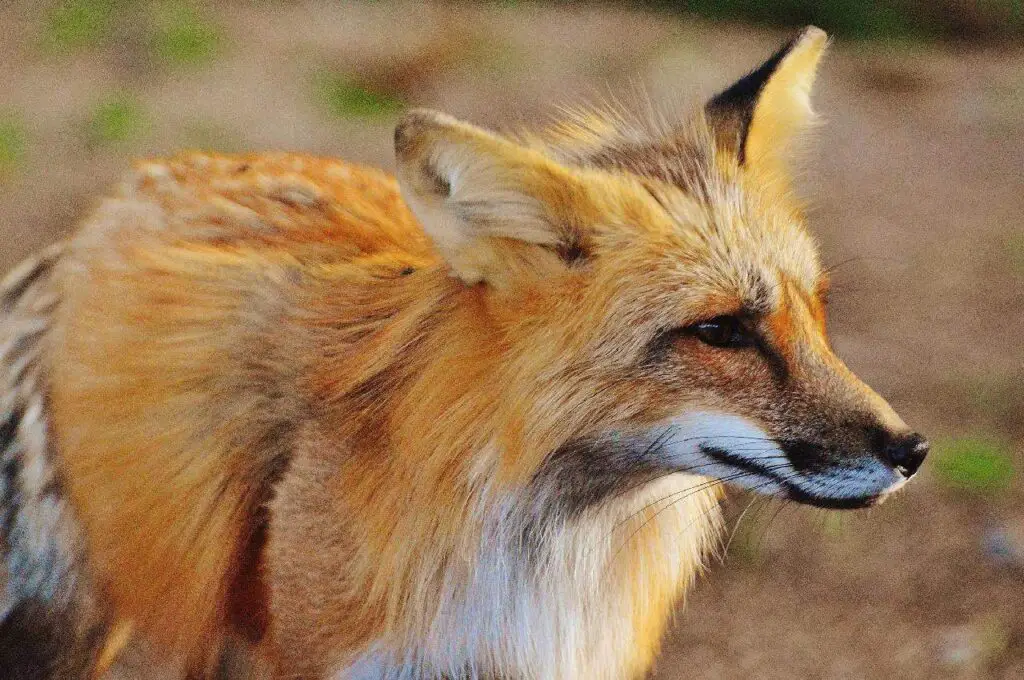
Foxes
- There are 12 valid fox species, of which the red fox is the most common.
- Foxes have impeccable hearing and hear low-frequency sounds to recognize prey when they are underground.
- They are swift and can run up to 45 mph.
- A fox has a distinctive unpleasant smell permeating from sticky musky scent glands at the base of its tail.
- Their scream-like howl can be terrifying, and they defend themselves against predators by barking.
- A Foxe’s life in the wild averages three years, but captivity, such as in a zoo, foxes can live up to 10 to 12 years.
- The endangered species in the US are the Sierra Nevada red fox.
Eagles
- More than 60 eagle species are found worldwide, of which the Bald eagle is the most common in the US.
- Due to their fantastic eyesight, eagles can detect prey up to 2 miles away.
- Eagles can fly as high as 15 000 feet and reach a speed of 30mph, and some species can reach 100mph when swooping down to catch prey.
- The eagle’s beak and talons are made from keratin, so they continue to grow, but regular use in the wild keeps them at the proper length.
- Eagles can live 20 to 30 years in the wild, but they can live up to 50 to 70 years in captivity due to veterinary care.
- The Bald eagle is no longer on the endangered list because they are a protected species in the US.
Where Do the Fox and the Eagle Live?
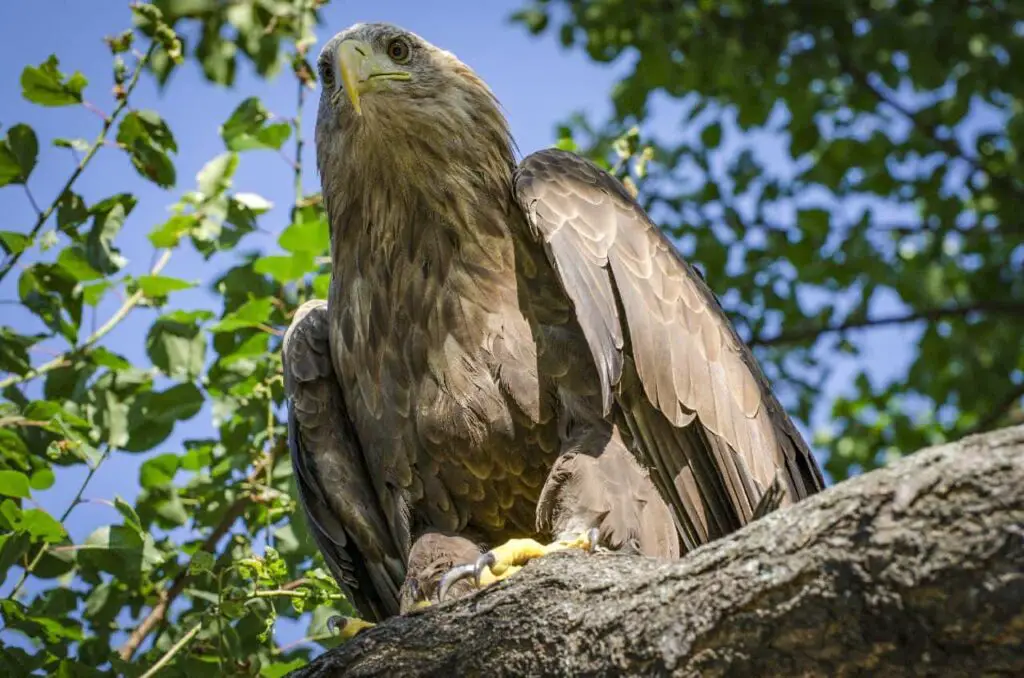
Foxes Live In:
Most foxes live in forest areas but are also found in grasslands, deserts, and mountains. They choose areas with dense vegetation or under a tree or group of boulders to make their home.
Their dens are tunnels that are dug in the ground, leading to multiple dugout areas. These dens are 3 to 8 feet deep and provide cool areas to sleep, a haven to store food, and raise their young. Several exists are created so that the fox can easily escape when predators enter their home.
Eagles Live In:
Several eagles build their nests in tall trees, and others prefer cliffs or more open areas. The nest or eyries are bulky, made from sticks and branches, lined with moss, grass, and vegetation. These eyries are mainly used for breeding purposes as eagles prefer to sleep perched on a nearby branch.
Family Life of the Fox and the Eagle
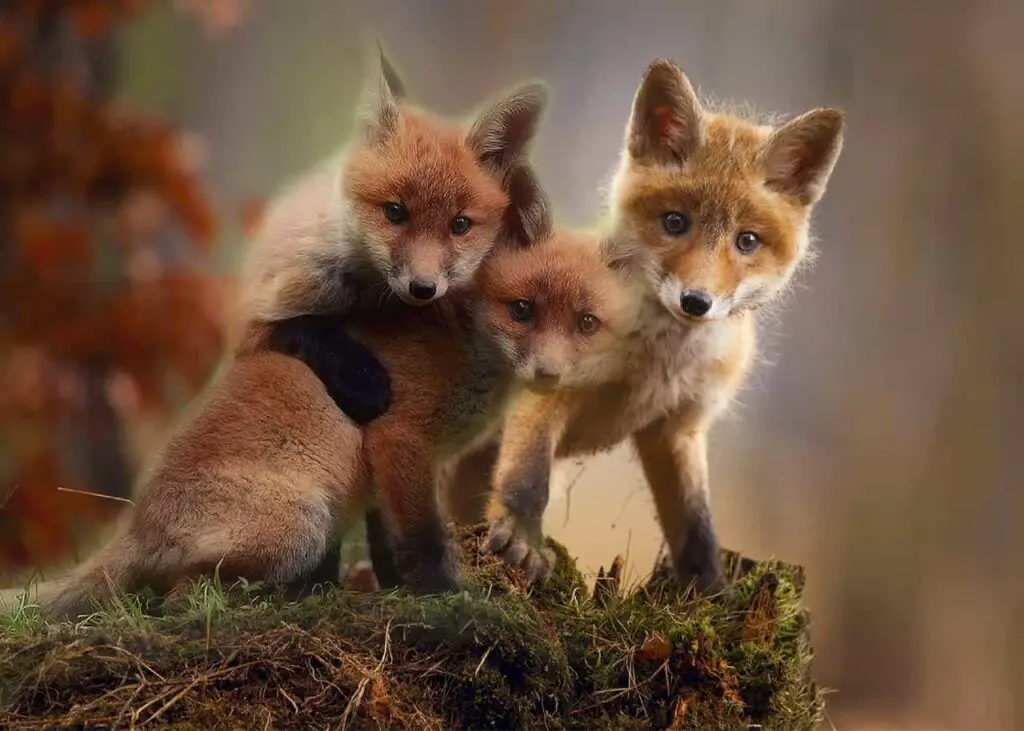
How Do Foxes Raise their Pups?
Foxes are monogamous mammals. The female vixen creates a nesting chamber in one of the dugout holes to give birth to her kits. The gestation period is 52 days, and foxes usually have 4 to 5 pups. The parents take care of their young.
The baby kits are born with closed eyes, which open after 10 to 12 days after birth. For the first few weeks, the fox parents feed regurgitated food to the kits until they can eat independently. Slowly, they are coaxed to leave the den, fend for themselves, and are taught to hunt.
How Do Eagles Raise their Chicks?
Eagles are monogamous, and the pair return to their nest every year to raise their young. The pair build the nest together. The female produces 1 to 3 eggs and will keep them warm for 35 days before they hatch.
The young nestlings are fed raw meat, which the male provides. Eaglets stay in the nest for up to fourteen weeks before learning how to fly. During this time, the parents still provide food until they leave the nest for good.
What Do Foxes and Eagles Eat and How Do they Hunt?

- Foxes are omnivores and feed on insects, small reptiles, and animals such as lizards, rats, mice, rabbits, and sometimes eggs and vegetation. Some foxes live near the ocean and will live off fish and crab.
Foxes are nocturnal and hunt using a pouncing technique where they crouch down in camouflage, leap up and land on their prey using their hind legs. They sink their pronounced canine teeth into the neck and shake their prey till it is dead.
- Eagles are carnivores living off meat and fish. They prey on monkeys, sloths, rabbits, hairs, grouse, and fish.
Eagles are diurnal and hunt for prey by soaring high in the sky or waiting on a perch. Once they detect their prey, they swoop down, grab it with their strong talons and carry it off to kill.
Who are their Predators?
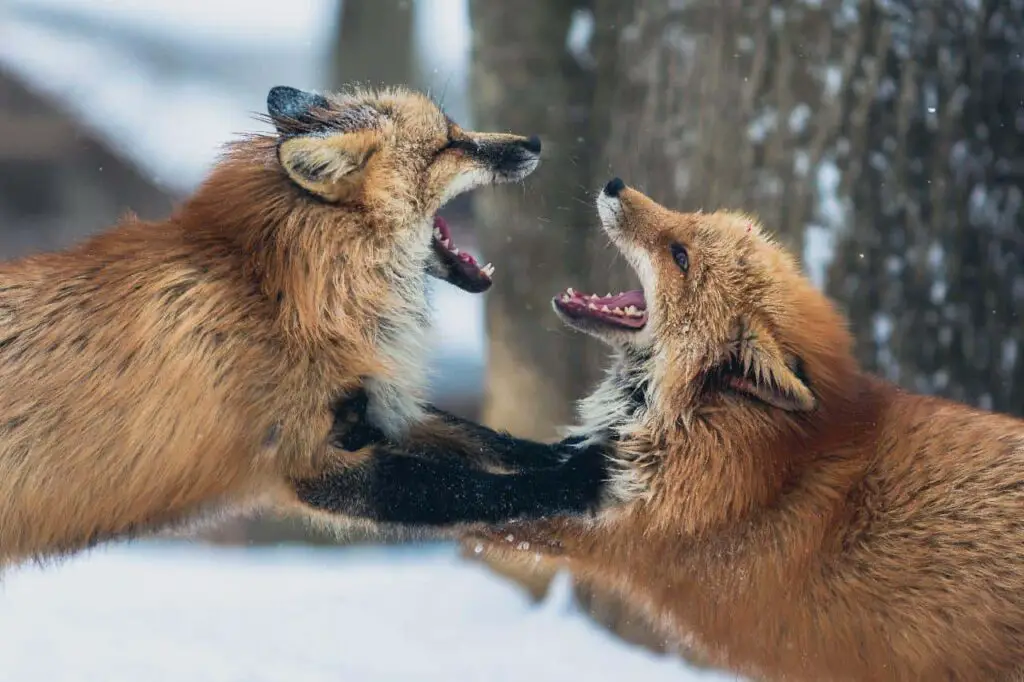
Foxes are hunted by coyotes, wolves, bears, and mountain lions. The young kits often fall prey to an eagle.
Eagles are preyed on by humans, hawks, and raccoons. Owls, raccoons, and bobcats eat the eagle’s eggs and baby chicks.
Conclusion
A fox is a mammal and an eagle a bird of prey, so what could be more different? But, although they do have physical differences, do not hunt the same way or eat the same food, there are some similarities they share.
The fox and the eagle have shown the same caring qualities by mating for life and raising their young.
They are both hunted by predators, and they have some remarkable physical qualities. The fox has impeccable hearing and can run at incredible speed. In contrast, the eagle has fantastic eyesight, can fly to unbelievable heights, and swoop down at astonishing speed to catch its prey.
Although these two will never be friends, the cunning fox and the majestic eagle are beautiful and perfect in their unique way!
References:
OneKindPlanet: Eagle
Wikipedia: Fox
Wikipedia: Eagle
Live Science: Foxes: Facts & Pictures

